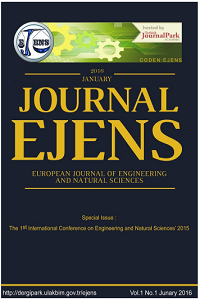The effect of the consideration of slab dimensions on optimum design of reinforced concrete beams
The effect of the consideration of slab dimensions on optimum design of reinforced concrete beams
___
- [1]. Geem, Z. W., Kim, J. H., & Loganathan, G. V. (2001). A new heuristic optimization algorithm: harmony search. Simulation, 76(2), 60-68.
- [2]. ACI 318M-05, Building code requirements for structural concrete and commentary, American Concrete Institute, 2005.
- [3]. Goldberg, D.E. (1989), Genetic algorithms in search, Optimization and machine learning, Boston MA: Addison Wesley.
- [4]. Dorigo, M., Maniezzo, V. and Colorni A (1996), “The ant system: Optimization by a colony of cooperating agents”, IEEE Transactions on Systems Man and Cybernet B, 26, 29–41.
- [5]. Koumousis, V. K., Arsenis, S. J. (1998), “Genetic Algorithms in Optimal Detailed Design of Reinforced Concrete Members”, Comput-Aided Civ. Inf., 13, 43-52.
- [6]. Govindaraj, V., Ramasamy, J. V. (2005), “Optimum detailed design of reinforced concrete continuous beams using Genetic Algorithms”, Comput. Struct., 84, 34–48.
- [7]. Bekdaş, G. and Nigdeli, S.M. (2012), “Cost optimization of T-shaped reinforced concrete beams under flexural effect according to ACI 318”, In: 3rd European Conference of Civil Engineering, Paris, France.
- [8]. Nigdeli, S. M., & Bekdaş, G. (2016). Optimum design of RC continuous beams considering unfavourable live-load distributions. KSCE Journal of Civil Engineering, DOI: 10.1007/s12205-016-2045-5.
- [9]. Rafiq, M. Y., Southcombe, C. (1998), “Genetic algorithms in optimal design and detailing of reinforced concrete biaxial columns supported by a declarative approach for capacity checking”, Comput. Struct. 69, 443-457.
- [10]. Nigdeli, S. M., Bekdas, G., Kim, S., & Geem, Z. W. (2015). A novel harmony search based optimization of reinforced concrete biaxially loaded columns.Structural Engineering and Mechanics, 54(6), 1097-1109.
- [11]. Camp, C. V., Pezeshk, S., Hansson, H. (2003), “Flexural Design of Reinforced Concrete Frames Using a Genetic Algorithm”, J Struct. Eng.-ASCE., 129, 105-11.
- [12]. Govindaraj, V., Ramasamy, J. V. (2007), “Optimum detailed design of reinforced concrete frames using genetic algorithms”, Eng. Optimiz., 39(4), 471–494.
- [13]. Camp, C.V. and Akin, A. (2012), “Design of retaining walls using big bang–big crunch optimization”, Journal of Structural Engineering, Vol.138, No.3, pp.438–448, DOI:10.1061/(ASCE)ST.1943-541X.0000461.
- [14]. Temur, R, Bekdaş, G. (2016), “Teaching learning-based optimization for design of cantilever retaining walls”, Structural Engineering and Mechanics, Vol.57, No.4, pp.763-783, DOI: 10.12989/sem.2016.57.4.763.
- Başlangıç: 2015
- Yayıncı: CNR Çevre
Toygun Dağdevir, Orhan Keklikcioglu, Veysel Ozceyhan
Determination of Appropriate Distribution Functions for the Wind Speed Data Using the R Language
A Useful Way to Dispose of Phenolic-rich Agro-industrial Wastes: Mushroom Cultivation
Mustafa GÜNAY, Halil DEMİR, Mehmet Erdi KORKMAZ, Ramazan ÇAKIROĞLU
Solar Radiation Modeling with Adaptive Approach
Emre Akarslan, Fatih Onur Hocaoglu
The Importance of Waste and Environment Management in Printing Industry
Influence of Pouring Temperature on The Formation of Spheroidal and Lamellar Graphite In Cast Iron
Numerical Investigation of Hot Ultrasonic Assisted Turning of Titanium Alloy
Effects of SiO2/Water Nanofluid Flow in a Square Cross-Sectioned Curved Duct
